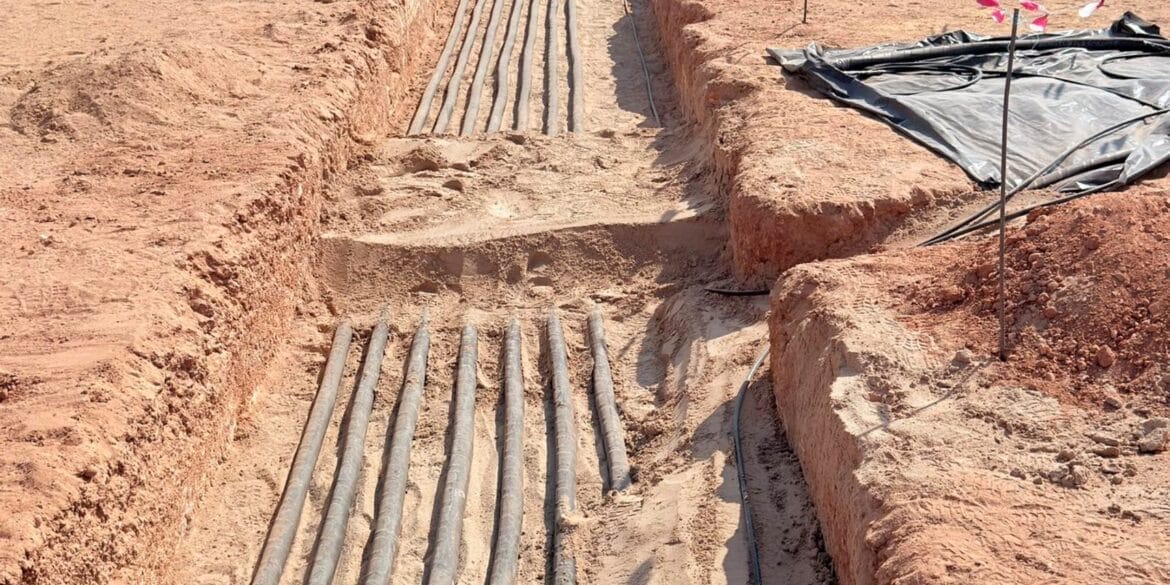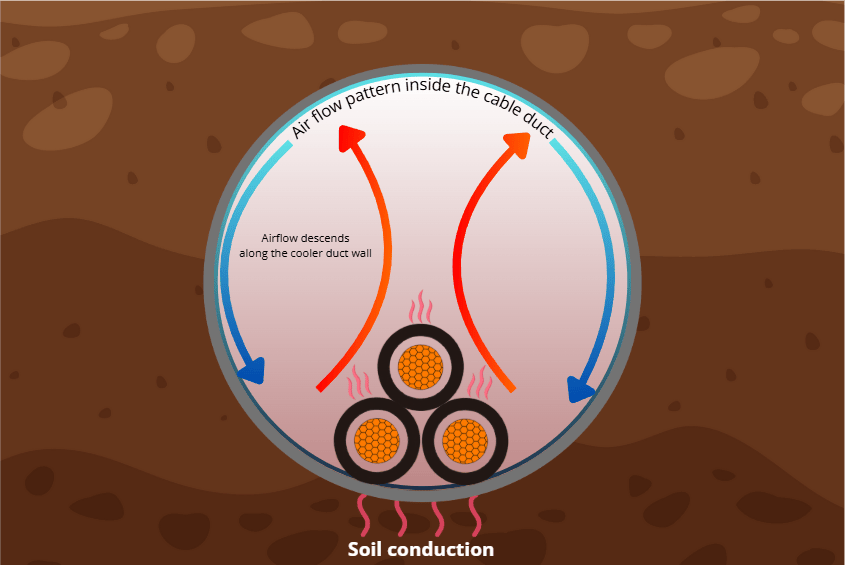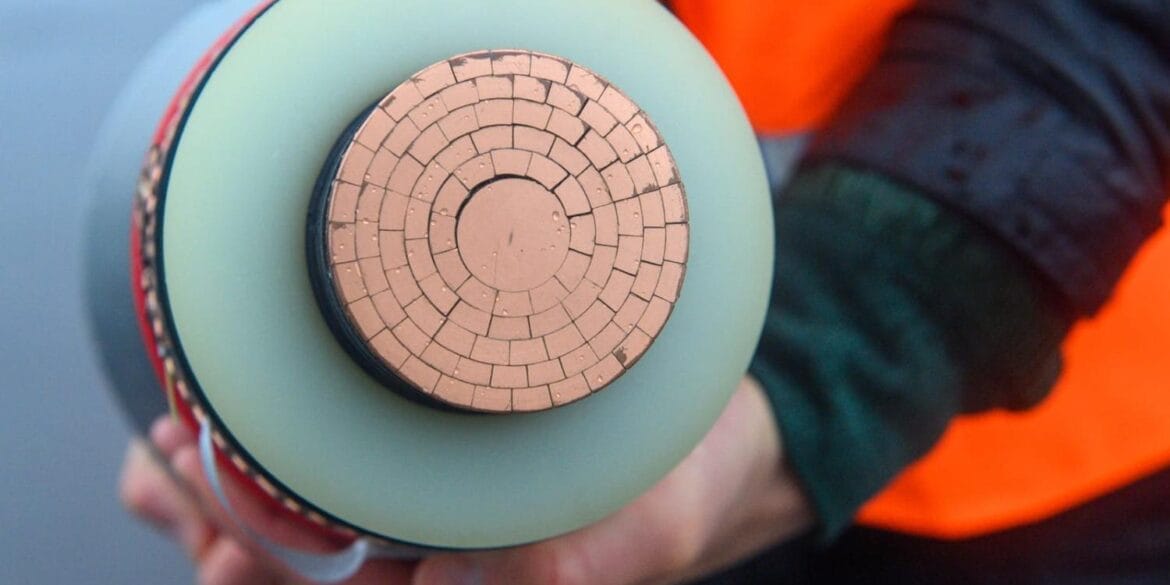Table of Contents
What is the 2 K Criterion
Installing submarine cables in or on the seabed causes local temperature increases. Cables are typically buried in the seabed, while on rocky or solid substrates, they may be laid directly on the seafloor. The burying of cables raises significant concerns about heat emissions, as even subtle permanent increases in ambient temperature can harm biological organisms. The most vulnerable organisms are the benthos, which live on the sea floor and are buried or burrowed to about 35 cm from the surface. The most prominent adverse effects include deoxygenation of the seabed, leading to the death of a wide range of fauna and the formation of black spots on the sea bed along the cable route.
ELEK Cable HV Software designs cable systems to meet the 2 K criterion.
Seabed Soil Thermal Properties
| Soil Type | Minimum Thermal Conductance (W/mK) | Maximum Thermal Conductance (W/mK) | Maximum Specific Thermal Resistance (mK/W) | Minimum Specific Thermal Resistance (mK/W) |
|---|---|---|---|---|
| Gravel | 2 | 3.3 | 0.5 | 0.3 |
| Sand | 1.5 | 2.5 | 0.67 | 0.4 |
| Clay | 0.9 | 1.8 | 1.11 | 0.56 |
| Bed-load / Glacial Drift | 2.6 | 3.1 | 0.38 | 0.32 |
| Silt / Sludge | 1.4 | 2 | 0.71 | 0.5 |
Case Study - HVDC Cable System
To illustrate the practical implications of the 2 K Criterion, a case study involving a 320 kV HVDC submarine cable is considered. The cable is an XLPE-insulated single-core cable with a 2000 mm2 copper conductor, a lead sheath, and armouring. The installation conditions include direct burial in the seafloor with a soil thermal resistivity of 0.8 K.m/W and a soil temperature of 15 ℃. The axial separation distance between cables is set at 1 m.
In this case study, the cable’s installation depth varies from 1.5 m to 0.5 m in steps of 0.5 m. For each burial depth, the position of the 2 ℃ contour is noted. If the contour is less than 300 mm from the sea bed, the current rating on the cable is reduced to achieve the 2 K criterion. For example, when the cable is buried at 0.5 m with a rated current of 2060 A, the 2 ℃ contour is observed at 0.075 m below the sea bed. Since the 2 K criterion is violated, the cables must be derated to 1028 A, resulting in a 50 % decrease in the current cable rating.
At a burial depth of 1 m with a rated current of 2048 A, the 2 ℃ contour is observed at 0.13 m below the sea bed. Again, the 2 K criterion is violated, requiring the cables to be derated to 1316 A. This results in a 35.7 % decrease in the current cable rating. Finally, at a depth of 1.5 m with a rated current of 2035 A, the 2 ℃ contour is at 0.17 m below the sea bed. The cable rating must be decreased to 1579 A to meet the 2 K criteria, resulting in a 22.4 % derating.
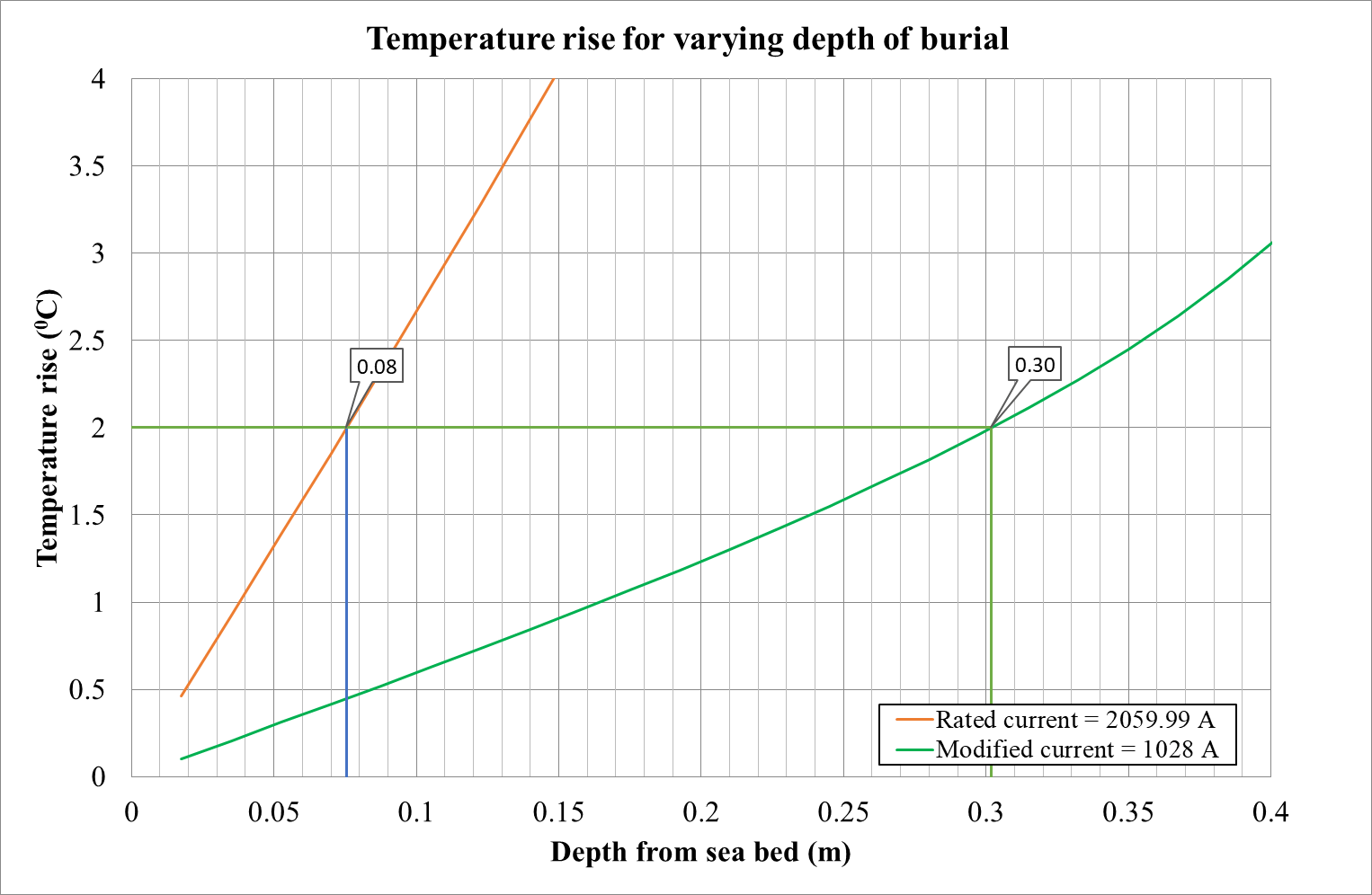
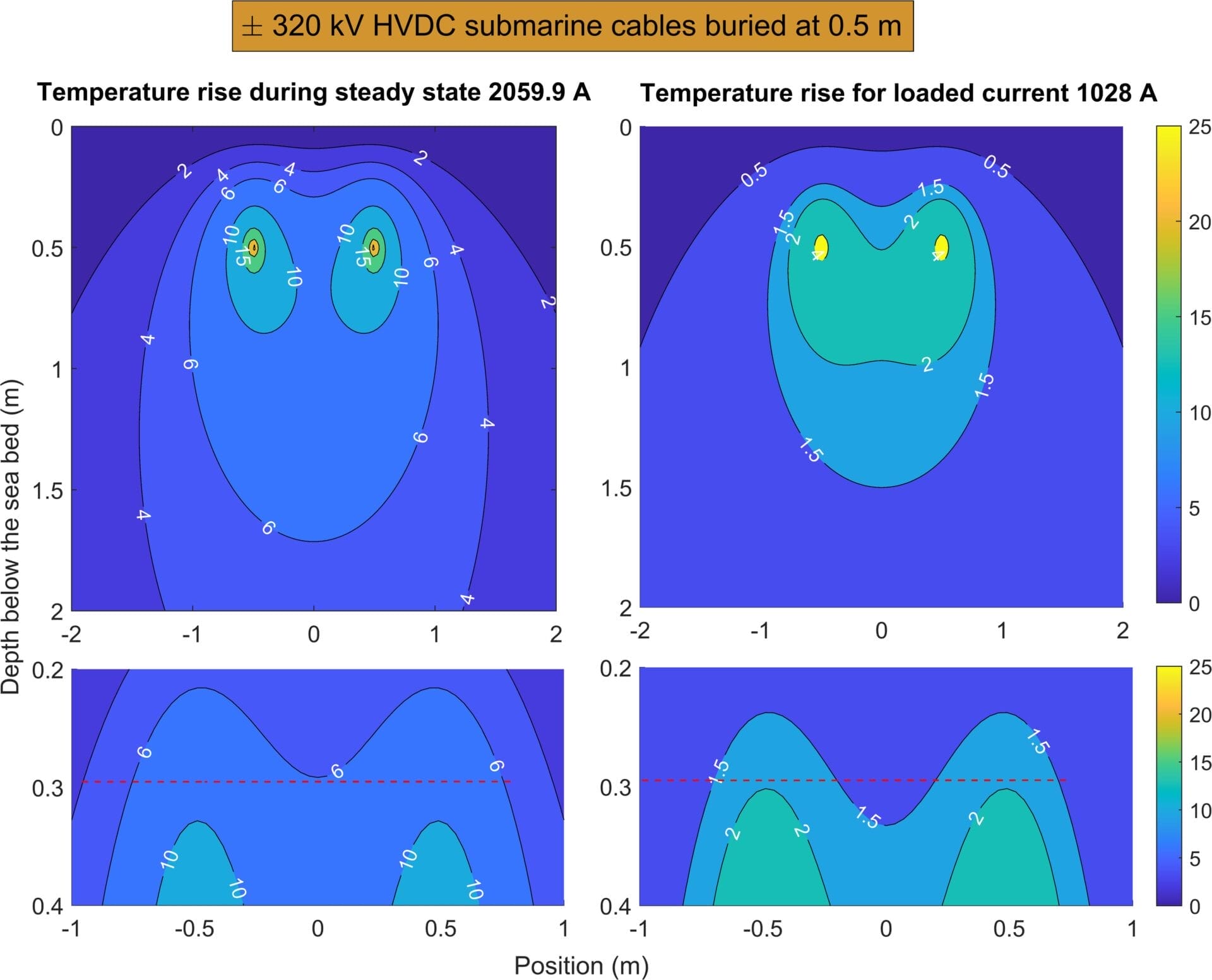


Summary


